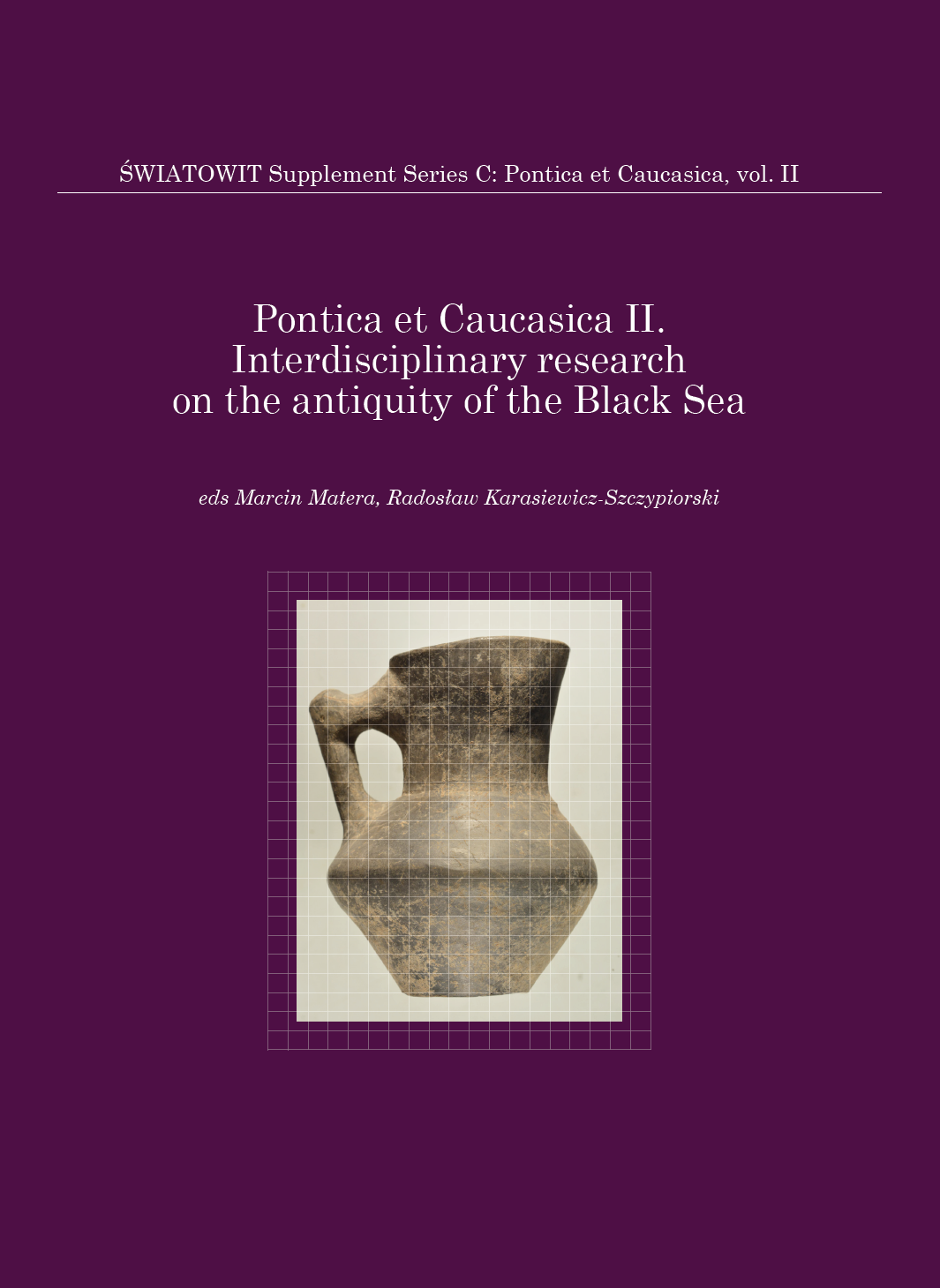Итоги работ по изучению палеогеографии Танаиса в 2015–2017 гг.
Results of paleogeographic researches of Tanais in 2015–2017
Author(s): Denis Bunin, S.M. Ilyashenko, Andrei V. Panin, Olga S. Khokhlova
Subject(s): Archaeology
Published by: Wydawnictwa Uniwersytetu Warszawskiego
Keywords: Tanais; paleogeography; climate; geomorphology; interdisciplinary studies; Lower Don region
Summary/Abstract: The foundation of Tanais in the 3rd century BC and its growth through the 2nd century BC took place in climatic conditions, comparable to those of the modern period. The most devastating conquest of the city by Bosporus King Polemon occurred in the late 1st century BC, when the climate aridity reached its peak. Throughout the whole period of the city existence it was surrounded by steppe communities, but the coniferous (pine) pollen was also found. The highest proportion of pollen of cultivated plants and weed (4–6%) is found in the assemblages attributable to the first period of the city life (the 2nd–1st centuries BC). The analysis of microbiomorphs agreed with the pollen data and provided additional data on the wood and reed having been widely used in economical activities in the first period of the city life. From the middle of the 2nd to the late 4th centuries AD the climate conditions may be considered to be humid and favorable for the bioproductivity. Another wave of aridity was recorded at the boundary of the 4th and 5th centuries AD. At the end of the 5th century AD the city ceased to exist. A complex analysis of sediments, opened by drilling, was also performed. Due to the results, at least at the beginning of the 3rd century AD the harbor area of Tanais was situated inside of Don branch – Myortvy Donets. At the time of foundation, the city could be located at the confluence of the river into the sea, and by the end of its existence it could already be inside the delta. Apparently, in the first centuries AD Myortvy Donets was more watery than it is now, which allowed it to fulfill the functions of the main transport way. Thus, we can suppose that the middle class of ancient merchant ships could freely enter Tanais harbor.
Book: Interdisciplinary research on the antiquity of the Black Sea. Volume II
- Page Range: 21-27
- Page Count: 7
- Publication Year: 2021
- Language: English, Russian
- Content File-PDF

